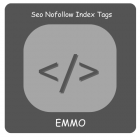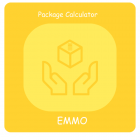Understanding Meta Robots Tags & X-Robots-Tag: Full Overview

Understanding Meta Robots Tags & X-Robots-Tag: Full Overview
Meta robots and X-Robots-Tag are tools used to manage how search engines index and display web content in search results. The meta robots tag is HTML code embedded directly on a web page, primarily for handling indexing instructions like "noindex" (don’t index the page) and "nofollow" (don’t follow the links). The X-Robots-Tag functions similarly but is an HTTP header added server-side, allowing more flexibility by applying directives to non-HTML files like PDFs, images, and videos.
Table Of Content
- Guide to Meta Robots Tags: What They Are and Why They Matter
- Comparing Meta Robots Tags and Robots.txt: How They Work Together in SEO
- Robots Meta Tags: What They Do and How to Use Them for SEO
- How Robots Meta Tags Impact SEO: A Practical Guide
- Key Components of Meta Robots Tags: Name and Content Attributes Explained
- Step-by-Step Guide to Adding Robots Meta Tags in Your CMS or HTML
- Understanding X-Robots-Tags: How They Work for Non-HTML Files
- Setting Up X-Robots-Tag: Apache and Nginx Guide
- Avoiding Common Meta Robots Tag Errors
Guide to Meta Robots Tags: What They Are and Why They Matter
A meta robots tag is an HTML element that tells search engines how to handle your page in search results. By placing it in theheadsection, you can control if and how your content is indexed, shown, or followed by search engines. For instance,meta name="robots" content="noindex"prevents crawlers from indexing a page, keeping it out of search results.
Why Meta Robots Tags Are Important
Meta robots tags provide precise control over what content search engines should index and display, which can significantly impact SEO. For instance, if you have duplicate or outdated pages, you might use noindex to ensure these don’t affect your site's ranking. Alternatively, nofollow can protect against passing link equity to low-value pages.
Practical Uses
For Testing: Use noindex to prevent staging sites from appearing in search results.
For Sensitive Pages: Apply noindex to restrict access to private or low-value content.
For Redundant Content: Block duplicate pages to avoid SEO penalties.
Comparing Meta Robots Tags and Robots.txt: How They Work Together in SEO
Meta robots tags and robots.txt files both help manage how search engines interact with your website but in different ways. Robots.txt is a single file that affects the entire site, specifying which parts search engines should or shouldn’t access. Meanwhile, a meta robots tag operates on a page level, offering detailed instructions on whether that specific page should be indexed or followed in search results.
When to Use Each
Robots.txt
Robots.txt is ideal for blocking access to entire directories or non-public areas, like admin pages or duplicate content folders.
Meta Robots Tags
Meta Robots Tags allow fine control over how individual pages appear in search results, like preventing indexing of a thank-you page or limiting link equity passed through a page’s links.
Best Practice Tips:
Using these tools together can enhance your SEO control. For example, apply noindex to pages that should remain accessible but unindexed, while using robots.txt to restrict crawlers from sensitive site areas. Always check for errors, as misuse can impact valuable page visibility.
Robots Meta Tags: What They Do and How to Use Them for SEO
Robots meta tags control how search engines interact with your page. These tags allow you to manage what content search engines display in results and how they navigate your site. Using robots meta tags, you can decide if a page should
Why Robots Meta Tags Matter
Robots meta tags are essential for SEO as they give you control over how your content appears in search engines. If used effectively, they prevent low-value or duplicate pages from competing with key pages, helping you improve your overall ranking.
| Tag | Function |
|---|---|
| index/noindex | index allows indexing; noindex keeps the page out of search results. |
| follow/nofollow | follow lets search engines follow links; nofollow prevents link equity from being passed. |
| noimageindex | Prevents search engines from indexing page images. |
| nosnippet | Disables page snippets in search results, often used for sensitive information. |
| max-snippet | Limits snippet length to a specific character count in search results, controlling how much content shows on the SERP. |
When to Use Robots Meta Tags
Duplicate Content:
Use noindex to prevent similar pages from diluting your site’s SEO.
Low-Value Pages:
Block pages that don’t add value to search results, like login or thank-you pages.
Link Control:
Apply nofollow on affiliate or low-importance links to retain link equity for key pages.
How Robots Meta Tags Impact SEO: A Practical Guide
Robots meta tags play a key role in helping search engines like Google decide how to crawl and index your website’s pages. For large or frequently updated sites, these tags are especially useful for managing which pages search engines should—or shouldn’t—index. This can help keep irrelevant or redundant pages from showing up in search results, which keeps your site's SEO efficient and focused.
Using robots meta tags strategically can enhance your technical SEO. For instance, you may want to exclude specific types of pages from indexing, such as:
- Staging Site Pages: Prevents search engines from indexing your development or test pages.
- Confirmation Pages (like "Thank You" pages): Avoids unnecessary pages from appearing in search.
- Admin and Login Pages: Limits exposure of secure pages.
- Internal Search Result Pages: Prevents duplicate or low-value pages.
- Duplicate Content Pages: Avoids penalties and helps control content relevance.
Integrating robots meta tags with sitemaps and robots.txt files is an essential part of SEO. Used together, these elements prevent indexing issues that can affect your site’s visibility. Properly set up, they work as a filter, guiding search engines to index only what adds value to users and rankings.
| Directive | Use Case |
|---|---|
| noindex | Prevents pages from being indexed in search results |
| nofollow | Stops search engines from following page links |
| noarchive | Prevents cached copies from being stored |
| nosnippet | Blocks descriptive snippets in search results |
| max-snippet:-1 | Limits the length of text snippets |
Key Components of Meta Robots Tags: Name and Content Attributes Explained
Meta robots tags use two main attributes—name and content—that work together to tell search engines how to handle specific pages in search results. These attributes control whether a page gets indexed or followed and which crawlers should follow the instructions.
Here are some common crawler names:
- Google: Googlebot (or Googlebot-news for news results)
- Bing: Bingbot
- DuckDuckGo: DuckDuckBot
- Baidu: Baiduspider
- Yandex: YandexBot
Content Attribute
The content attribute defines the directive, or action, that the specified crawler should take on the page. Some common directives include:
noindex: Prevents the page from appearing in search results.nofollow: Stops search engines from following links on the page.noarchive: Prevents search engines from saving a cached copy of the page.nosnippet: Disables displaying a description snippet in search results.
Example:
meta name="robots" content="noindex, nofollow"
Content Attribute
The “content” attribute contains instructions for the crawler.
It looks like this:
- 0: Opts your page out of text snippets (as with “nosnippet”)
- -1: Indicates there’s no limit
- None: Google won’t show a preview image
- Standard: Google may show a default preview
- Large: Google may show a larger preview image
- 0: Opts your page out of video snippets
- -1: Indicates there’s no limit
- Open the “Advanced” tab below the page editor.
- Set “Allow search engines to show this page in search results?” to “No” to apply noindex.
- To prevent link crawling, set “Should search engines follow links on this page?” to “No.”
- For other directives, use the “Meta robots advanced” field to customize.
- Go to the “Advanced” tab in the meta box and select your preferred robots directives.
- Open Online Store > Themes in Shopify, and click on “Edit code” for the active theme.
- Find and open the
theme.liquidfile. - Add your robots meta tag using conditional logic for specific pages:
- Go to your Wix dashboard, then click “Edit Site.”
- In the left-hand menu, select Pages & Menu.
- Click “...” next to your target page and select SEO basics > Advanced SEO.
- Under “Robots meta tag,” select the directives you want. For tags like “notranslate” or “unavailable_after,” click on “Additional tags” and then “Add New Tags.”
- Use the X-Robots-Tag for non-HTML files that you want to exclude from indexing.
- Implement it via HTTP headers, which allows directives like noindex and nofollow.
- Check your setup with server logs or tools like Google Search Console to confirm the header is functioning as expected.
- Misapplying nofollow and noindex Tags: Be cautious when setting nofollow on valuable pages, as this prevents search engines from recognizing links on the page. Similarly, using noindex on pages you want ranked can remove them from search results.
- Ignoring Changes in Tag Rules: Google frequently updates how it handles directives. Regularly review your tags to ensure compatibility with the latest search engine guidelines.
content="instruction"
Default Content Values
Without a robots meta tag, crawlers will index content and follow links by default (unless the link itself has a “nofollow” tag).
This is the same as adding the following “all” value (although there is no need to specify it):
meta name="robots" content="all"
Content Attribute
The “content” attribute contains instructions for the crawler.
It looks like this:
content="instruction"
Noindex
The meta robots “noindex” value tells crawlers not to include the page in the search engine’s index or display it in the SERPs.
meta name="robots" content="noindex"
Without the noindex value, search engines may index and serve the page in the search results.Typical use cases for “noindex” are cart or checkout pages on an ecommerce website.
Nofollow
This tells crawlers not to crawl the links on the page.
meta name="robots" content="nofollow"
Google and other search engines often use links on pages to discover those linked pages. And links can help pass authority from one page to another.Use the nofollow rule if you don’t want the crawler to follow any links on the page or pass any authority to them.
Noarchive
The “noarchive” content value tells Google not to serve a copy of your page in the search results.
meta name="robots" content="noarchive"
If you don’t specify this value, Google may show a cached copy of your page that searchers may see in the SERPs. You could use this value for time-sensitive content, internal documents, PPC landing pages, or any other page you don’t want Google to cache.
Noimageindex
This value instructs Google not to index the images on the page.
meta name="robots" content="noimageindex"
Using “noimageindex” could hurt potential organic traffic from image results. And if users can still access the page, they’ll still be able to find the images. Even with this tag in place.
Notranslate
“Notranslate” prevents Google from serving translations of the page in search results.
meta name="robots" content="notranslate"
If you don’t specify this value, Google can show a translation of the title and snippet of a search result for pages that aren’t in the same language as the search query.
Nositelinkssearchbox
This value tells Google not to generate a search box for your site in search results.
meta name="robots" content="nositelinkssearchbox"
If you don’t use this value, Google can show a search box for your site in the SERPs.
Nosnippet
Nosnippet” stops Google from showing a text snippet or video preview of the page in search results.
meta name="robots" content="nosnippet"
Without this value, Google can produce snippets of text or video based on the page’s content.
Max-snippet
Max-snippet” tells Google the maximum character length it can show as a text snippet for the page in search results.
meta name="robots" content="max-snippet:0"
Or, if you want to allow up to 100 characters:
meta name="robots" content="max-snippet:100"
To indicate there’s no character limit:
meta name="robots" content="max-snippet:-1"
Max-image-preview
This tells Google the maximum size of a preview image for the page in the SERPs.
There are three values for this directive:
meta name="robots" content="max-image-preview:large"
Max-video-preview
This value tells Google the maximum length you want it to use for a video snippet in the SERPs (in seconds).
As with “max-snippet,” there are two important values for this directive:
For example, the tag below allows Google to serve a video preview of up to 10 seconds:
meta name="robots" content="max-video-preview:10"
Indexifembedded
When used along with noindex, this (fairly new) tag lets Google index the page’s content if it’s embedded in another page through HTML elements such as iframes.
(It wouldn’t have an effect without the noindex tag.)
meta name="robots" content="noindex, indexifembedded"
They often have media pages that should not be indexed. But they do want the media indexed when it’s embedded in another page’s content.
Two or More Robots Meta Elements
Use separate robots meta elements if you want to instruct different crawlers to behave differently.
For example:
meta name="robots" content="nofollow" meta name="YandexBot" content="noindex"
This combination instructs all crawlers to avoid crawling links on the page. But it also tells Yandex specifically not to index the page (in addition to not crawling the links).
Tip
To enhance your eCommerce store’s performance with Magento, focus on optimizing site speed by utilizing Emmo themes and extensions. These tools are designed for efficiency, ensuring your website loads quickly and provides a smooth user experience. Start leveraging Emmo's powerful solutions today to boost customer satisfaction and drive sales!
Step-by-Step Guide to Adding Robots Meta Tags in Your CMS or HTML
To control how search engines index and interact with your website, you can add robots meta tags directly to your site’s HTML code or through various content management systems (CMS) like WordPress, Shopify, or Wix. Here’s how to get started.
Adding Robots Meta Tags to HTML
If you have access to your page’s HTML, insert robots meta tags into the
section. For instance, if you don’t want search engines to index or follow links on the page, you can use:meta name="robots" content="noindex, nofollow"
Implementing Robots Meta Tags in WordPress
For WordPress users, plugins like Yoast SEO or Rank Math simplify robots tag management.
Using Yoast SEO:
Using Rank Math:
Adding Robots Meta Tags in Shopify
To add robots meta tags in Shopify, update the
section in the theme.liquid file of your theme:{% if handle contains 'page-name' %} meta name="robots" content="noindex"
{% endif %}
Implementing Robots Meta Tags in Wix
For Wix users, adding robots meta tags is straightforward:
Understanding X-Robots-Tags: How They Work for Non-HTML Files
The X-Robots-Tag works similarly to a meta robots tag but is specifically designed for non-HTML files, such as PDFs, images, and other multimedia files. This tag is set within the HTTP header of a file, enabling you to control whether search engines can index these non-HTML resources.
How to Use X-Robots-Tags
To implement an X-Robots-Tag, you need to configure the HTTP header by adding it to your server settings, such as .htaccess (for Apache) or nginx.conf. This allows you to apply indexing rules similar to those for HTML pages. For example:
Header set X-Robots-Tag "noindex, nofollow"
| Directive | Purpose |
|---|---|
| noindex | Blocks the file from appearing in search results. |
| nofollow | Prevents crawlers from following links within the file. |
| noarchive | Stops search engines from storing a cached version of the file. |
| nosnippet | Disables snippet or description display in search results. |
| unavailable_after | Sets a date when the file should stop being indexed. |
Why Use X-Robots-Tags?
X-Robots-Tags offer flexibility for files outside standard HTML pages. For instance, if you have sensitive documents (like private PDFs) or large media files, using noindex keeps these files from cluttering your search results, helping to maintain a clean and SEO-optimized index.
Key Takeaways
Setting Up X-Robots-Tag: Apache and Nginx Guide
The X-Robots-Tag HTTP header allows you to control how search engines index and crawl your files. This tag is especially useful when you need to block specific files—like PDFs or images—without modifying the HTML of each page. Let’s cover how to set it up for both Apache and Nginx servers.
How to Use X-Robots-Tag on an Apache Server
To apply an X-Robots-Tag on an Apache server, add this code to your .htaccess or httpd.conf file:
Files ~ "\.pdf$"
Header set X-Robots-Tag "noindex, nofollow"
/Files
How to Use X-Robots-Tag on an Nginx Server
If you’re running an Nginx server, use this code in your site’s .conf file:
location ~* \.pdf$ {
add_header X-Robots-Tag "noindex, nofollow";
}
Key Points for Using X-Robots-Tag
| Task | Apache Code | Nginx Code |
|---|---|---|
| Block all PDFs | Files ~ "\.pdf$" Header set X-Robots-Tag "noindex, nofollow" Files. |
location ~* \.pdf$ { add_header X-Robots-Tag "noindex, nofollow"; } |
| Block all images | `Files ~ ".(jpg | png |
This method gives you precise control over file-specific indexing behavior, which is especially useful for managing SEO on larger sites with various media types. Be cautious, as incorrectly set tags can prevent critical files from being indexed. For a deeper dive, consult sources like Google’s Search Central and your server documentation.
Avoiding Common Meta Robots Tag Errors
Here are common mistakes to watch out for when using meta robots and x-robots-tags to manage how your content appears in search results.
Key Errors in Using Meta Robots and X-Robots-Tags
| Mistake | Explanation |
|---|---|
| Using Meta Robots Tags on Blocked Pages | If a page is disallowed by robots.txt, search engines won’t crawl it, making any meta robots tags on it ineffective. |
Adding Robots Directives to robots.txt |
Google no longer recognizes noindex in robots.txt. Use the noindex meta robots tag instead for deindexing pages. |
| Premature Removal from Sitemaps | Keep noindex pages in the sitemap until search engines have deindexed them to avoid delays in removal. |
| Leaving ‘Noindex’ on Live Pages | When launching a site, make sure staging pages with noindex tags are updated to ensure they’re fully crawlable. |
More Common Pitfalls
By keeping these mistakes in mind, you’ll avoid common indexing issues and improve your site’s visibility in search results. For more details on best practices, see resources like Moz or Google’s guidelines.
FAQs
What is a Meta Robots Tag?
A Meta Robots Tag is an HTML tag that helps search engines understand how to crawl, index, or display a page in search results. It goes in the page’s <head> section.
Why use X-Robots-Tag headers?
X-Robots-Tag headers give you flexibility, allowing you to control indexing and crawling at the HTTP header level, which is useful for non-HTML files like PDFs or images.
What is the difference between Meta Robots and X-Robots-Tag?
Meta Robots Tags are added within the HTML <head>, while X-Robots-Tag headers are part of the HTTP response header, making them ideal for non-HTML files.
Can Meta Robots Tags impact SEO?
Yes, properly set Meta Robots Tags improve SEO by guiding search engines on which pages to index, follow links on, or ignore, which affects content visibility.
What are the key values for Meta Robots Tags?
Common values include index, noindex, follow, and nofollow, each directing how a page is indexed and links followed by search engines.
What mistakes should be avoided with Meta Robots Tags?
Ensure not to use Meta Robots Tags on pages blocked by robots.txt, avoid outdated noindex directives in robots.txt, and check for any “noindex” tags left from staging environments before going live.
How can I verify my Meta Robots Tags are working?
Use tools like Google Search Console or inspect page headers with browser developer tools to confirm your Meta Robots Tags or X-Robots-Tag headers are active.
Can Meta Robots Tags be added to non-HTML files?
No, for non-HTML files (like PDFs), use X-Robots-Tag headers, which apply at the server level rather than within the HTML document.
What happens if I combine Meta Robots with X-Robots-Tag?
Generally, X-Robots-Tag overrides Meta Robots Tags. Be cautious with redundant directives to avoid conflicting instructions to search engines.
Is the “noindex” directive still supported in robots.txt?
No, Google no longer supports “noindex” in robots.txt. Use the “noindex” Meta Robots Tag instead.
Why are Meta Robots Tags important for site migration?
When moving from staging to live, check for “noindex” tags from the staging site to ensure all important pages are crawlable by search engines after launch.









